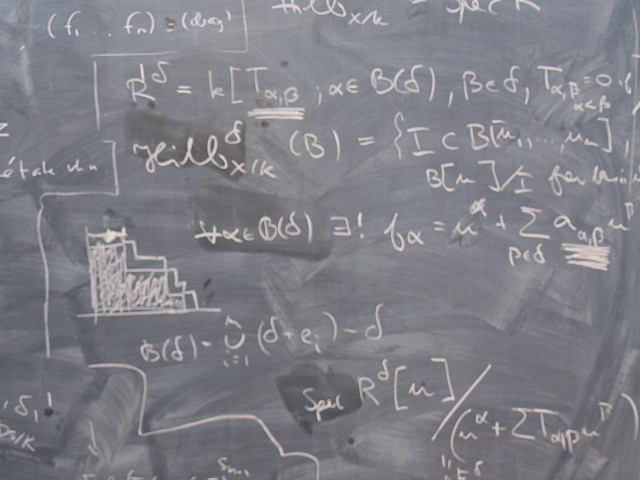Systems of linear equations and matrices; determinants, Cramerís rule, geometric interpretation of determinants. Vectors and geometry in two and three dimensions, dot product, cross product. Matrices as linear transformations from Rn to Rm. The least-squares method. Quadratic forms and diagonalization. Functions of several variables; partial derivatives, gradient, chain rule. Differentials. Curves and their parametrization in R2 and R3. Extreme value problems, the method of Lagrangeís multipliers. Implicit functions. Taylor approximation.
SF1609 Mathematics II 9.0 credits
This course has been discontinued.
Last planned examination: Spring 2000
Decision to discontinue this course:
No information inserted
Information per course offering
Course offerings are missing for current or upcoming semesters.
Course syllabus as PDF
Please note: all information from the Course syllabus is available on this page in an accessible format.
Course syllabus SF1609 (Autumn 2008–)Content and learning outcomes
Course contents
Intended learning outcomes
After finished course a student should be able to
- recognize and use the basic concepts of linear algebra: vectors and their operations, straight lines and planes, linear dependence and independence, base vectors, linear transformations, matrices and determinants, eigenvalues and eigenvectors, quadratic forms.
- recognize and use the basic concepts of differential multivariable calculus: partial derivative, differentiability, differential, gradient, directional derivative, functional matrix and functional determinant.
- understand and explain the interaction between linear algebra and differential calculus, e.g. in connection with linearization of functions or analysis of the stationary points of multivariable functions.
- More precisely, after finished course the student should be able to:
- solve geometric problems involving points, lines and planes by means of dot and cross product.
- apply chain rules on partial derivations and decide whether a function satisfies a certain partial differential equation.
Literature and preparations
Specific prerequisites
Mathematics I (SF1608) or equivalent.
Recommended prerequisites
Equipment
Literature
Andersson Lennart m.fl./Linjär algebra med geometri.
Persson&Böiers/Analys i flera variabler.
LTH/Övningar i analys i flera variabler.
Examination and completion
If the course is discontinued, students may request to be examined during the following two academic years.
Grading scale
Examination
- TEN1 - Examination, 9.0 credits, grading scale: A, B, C, D, E, FX, F
Based on recommendation from KTH’s coordinator for disabilities, the examiner will decide how to adapt an examination for students with documented disability.
The examiner may apply another examination format when re-examining individual students.
Other requirements for final grade
One written exam (TEN1; 9 hp).
Opportunity to complete the requirements via supplementary examination
Opportunity to raise an approved grade via renewed examination
Examiner
Ethical approach
- All members of a group are responsible for the group's work.
- In any assessment, every student shall honestly disclose any help received and sources used.
- In an oral assessment, every student shall be able to present and answer questions about the entire assignment and solution.